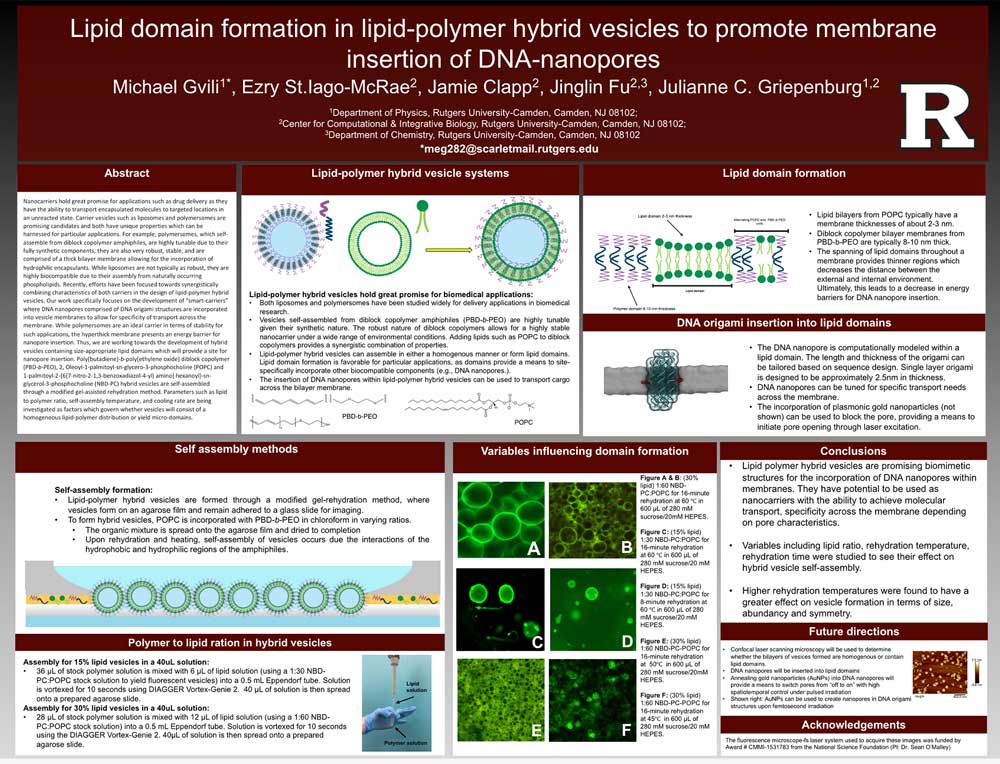Michael Gvili ‘22
Major: Biology
Minor: Chemistry
Faculty Mentor: Dr. Julianne Griepenburg, Assistant Professor of Physics
Abstract
Nanocarriers hold great promise for applications such as drug delivery as they have the ability to transport encapsulated molecules to targeted locations in an unreacted state. Carrier vesicles such as liposomes and polymersomes are promising candidates and both have unique properties which can be harnessed for particular applications. For example, polymersomes, which self-assemble from diblock copolymer amphiphiles, are highly tunable due to their fully synthetic components; they are also very robust, stable, and are comprised of a thick bilayer membrane allowing for the incorporation of hydrophilic encapsulants. While liposomes are not typically as robust, they are highly biocompatible due to their assembly from naturally occurring phospholipids. Recently, efforts have been focused towards synergistically combining characteristics of both carriers in the design of lipid-polymer hybrid vesicles.
Our work specifically focuses on the development of “smart-carriers” where DNA nanopores comprised of DNA origami structures are incorporated into vesicle membranes to allow for specificity of transport across the membrane. While polymersomes are an ideal carrier in terms of stability for such applications, the hyperthick membrane presents an energy barrier for nanopore insertion. Thus, we are working towards the development of hybrid vesicles containing size-appropriate lipid domains which will provide a site for nanopore insertion. Poly(butadiene)-b-poly(ethylene oxide) diblock copolymer (PBD-b-PEO) and 2, Oleoyl-1-palmitoyl-sn-glycero-3-phosphocholine (POPC) hybrid vesicles are self- assembled through a modified gel-assisted rehydration method. Parameters such as lipid to polymer ratio, self-assembly temperature, and cooling rate are being investigated as factors which govern whether vesicles will consist of a homogeneous lipid-polymer distribution or yield micro-domains.
Preview

